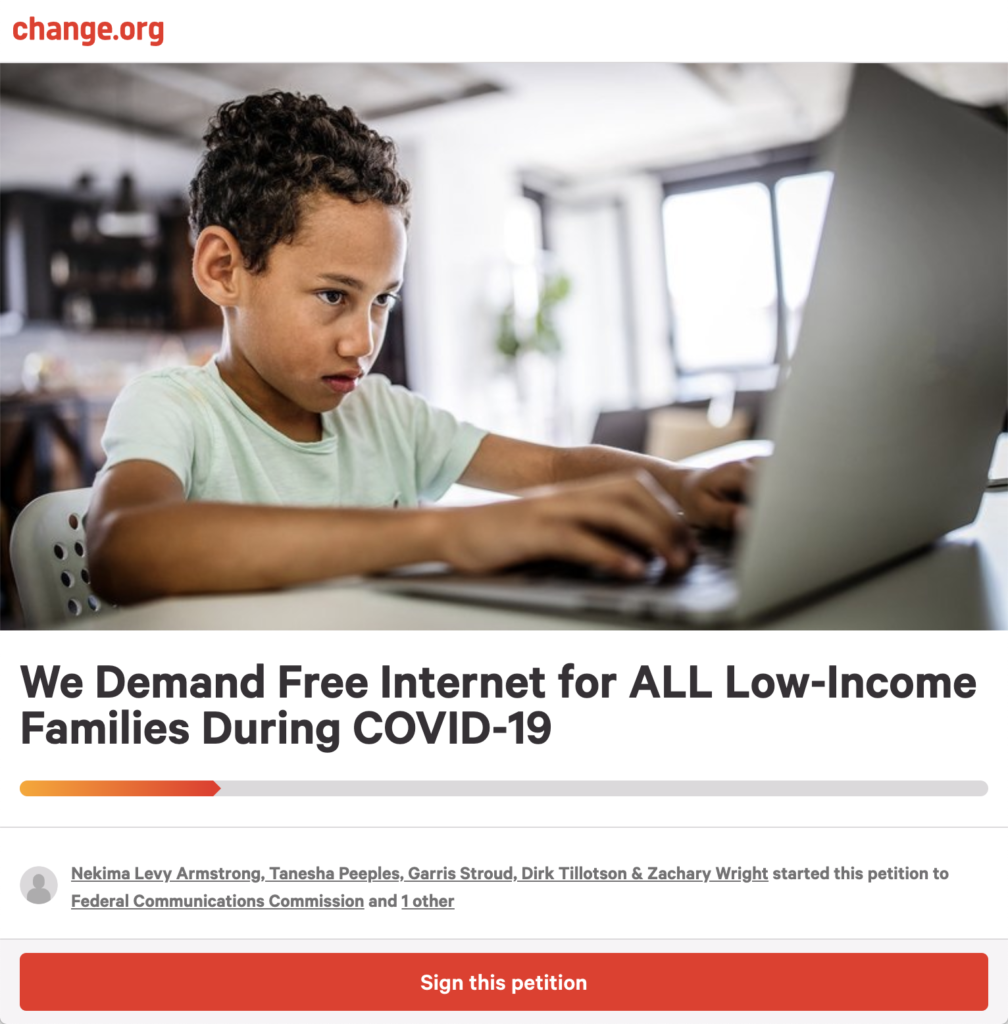
Apr 21, 2020 12:00:00 AM
In the 1920s, radio was an essential communications device—and it was free. In the 1950s, television became an important means of communication—and it was free. In 2020, why isn’t internet free when we need it to educate our children? It’s time for the FCC to step in. Broadband should always be free to students.
Students who don’t have broadband access are severely disadvantaged. The next 18 months will likely require sporadic sheltering in place and remote learning solutions. Schools, parents and communities are struggling to pay for a few months of internet access, but [pullquote position="right"]we need to recognize that learning must take place at school and online at home … forever.[/pullquote]
That means every student should have access to broadband anywhere, anytime—to level the playing field and help close the achievement gap. Academic success means the ability of students to do homework AND to explore the world online.

When schools closed, Learn4Life quickly distributed thousands of laptops to our students. These days, laptops are under $200—less than the cost of textbooks for one semester of high school. So, the return on investment is easy to justify, but the big issue is the lack of internet access.
[pullquote]In the schools I lead, 85% of our 23,000 at-risk students don’t have internet access at home.[/pullquote] This is more than a significant competitive disadvantage. Their families don’t have access to the basic lifesaving information we access through the internet on a regular basis, such as public data about COVID-19 and where to get tested, solutions for how to create your own masks, and community resources for food, medical care and shelter. Basic civic and economic information anyone needs to function in the modern world isn’t part of their world. They don’t have access to news, candidate information, free job training or online employment applications. Families without internet access are shut out.
Most families do have access to a smartphone of some sort, and it is a vital lifeline. Low-income parents will often pay for their phones before they pay for rent, or sometimes even food. This makes sense because cell phones connect them to jobs, church and family. I even witnessed a teen selling his sneakers to get cash to add minutes/data to his cell phone. Being connected isn’t a luxury. It is a necessity.
Some of our students were writing their papers on smartphones before we got laptops into their hands. They made do, but cell phones don’t always have the unlimited data needed for online education. Video chats with teachers, group collaboration, YouTube and Vimeo downloads, document sharing, e-books and online research all require significant broadband access. [pullquote position="right"]Full-time school online requires much more than two gigabytes of data downloads per month.[/pullquote]
Learn4Life is struggling to find the 19,000 hotspots we need—and the telecom companies are charging us for devices that used to be free. Prior to COVID-19, my telecommunication providers would GIVE me a hotspot to access WiFi if I signed up for a year-long $10 per month WiFi contract. Now, WiFi hotspots are hard to find. The advertised two months of free WiFi requires a year-long contract at $35 per month, making WiFi more expensive than laptops. Getting broadband consumes resources needed for teachers, counseling, academic intervention and eventually, school cleanliness and nurses.
When we return after stay at home orders end, we likely will have a year of sporadic remote learning requirements when outbreaks need to be addressed. But the plain truth is that [pullquote]our modern lives require ubiquitous WiFi, like clean air and water, shelter and basic nutrition, and students should not be penalized based on their parents’ ability to pay.[/pullquote] It is time that we recognize that students of all economic backgrounds need to be connected.
FCC requirements to support public access to telecommunications has long been part of U.S. policy. Radio and television were supported by advertising, but public access to cable broadcasting was an active part of the last century. Just in the last decade, eRate became a vital program that enabled every school in the country to get connected to the internet. Policymakers knew that the proper functioning of our schools demanded this basic infrastructure. The COVID-19 crisis has done a simple favor in forcing us to recognize that student learning outside of the classroom is just as important as inside. Eliminating this necessary barrier to 21st century learning is a practical and simple way to help reduce inequity in our education system and build success in all students.
Broadband should be free for students always.
Dr. Caprice Young is responsible for leading the Learn4Life Schools, serving more than 20,000 students in more than 85 learning centers in California, Ohio and Michigan. Raised in a host foster family, she identifies with and has committed her life to supporting students whose needs exceed the scope of traditional public schools. In 1999, Dr. Young left her technology strategy job at IBM to serve as a member and president of the Los Angeles school board. Later, as the founding CEO of the California Charter Schools Association, Dr. Young stewarded the massive expansion of the nascent charter school movement and believes that achieving the goal of high-quality education for all requires a robust ecosystem of support and collaboration. Since 2008, she has been called upon to intervene when schools and educational non-profits face challenges, and when education technology companies need strategic and operational expertise. Dr. Young teaches in the UCLA Educational Leadership doctoral program. She earned her Ed.D. from UCLA, her M.P.A. from USC and her B.A. from Yale University. She is a recipient of the Coro Crystal Eagle for Excellence in Public Service, the California State University Los Angeles Educator of the Year in 2016, and an inductee to the national Charter School Hall of Fame.
Few issues in education spark more tension and debate than standardized testing. Are they a tool for equity or a burden on students? A necessary check on school systems or a flawed measure of...
Charter schools are public schools with a purpose. Operating independently from traditional school districts, they're tuition-free, open to all students, and publicly funded—but with more flexibility...
Despite the benefits of a diverse teaching force, prospective teachers of color fall out of our leaky preparation pipeline at every stage: preparation, hiring, induction, and retention. Here’s what...
Ed Post is the flagship website platform of brightbeam, a 501(c3) network of education activists and influencers demanding a better education and a brighter future for every child.
© 2020-2025 brightbeam. All rights reserved.
Leave a Comment